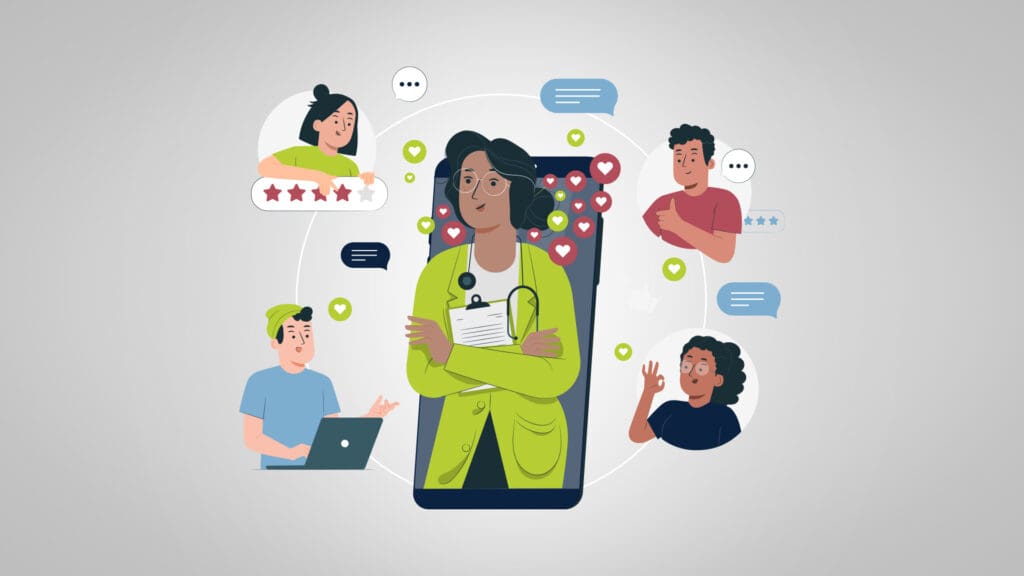
Modern Patient Engagement: The New Rules Healthcare Marketers Can Use to Build Trust
There was a time, not so long ago, when healthcare marketing meant making sure your hospital had a good billboard and your practice showed up on Google Maps. But those days are over. Today, healthcare decisions are shaped less by proximity and more by trust, experience, and emotional connection. Today’s patients aren’t just looking for care, they’re looking for care they can believe in. And that has changed everything.
In this edition of Vital Signs, we’ll explore how the rules of modern patient engagement have changed, what healthcare marketers need to do differently, and why empathy, authenticity, and personalization aren’t just nice-to-haves anymore-they’re the price of entry. We’ll talk about:
- Changes in the Post-Pandemic Patient
- What Patients Value
- Making Content that Matters
- Closing the Empathy Gap in Patient Communication
- The Role of Digital in Building Relationships
- Igniting Trust with Content
- Building a More Human Brand
Post-Pandemic Patients Are Different Now
COVID-19 didn’t just transform healthcare delivery; it transformed patient expectations. The digital health boom accelerated convenience, but also introduced a new wave of skepticism. Patients embraced online scheduling and telehealth, but not at the cost of losing personal connection.
A 2024 editorial from The Guardian across the pond nailed it. Patients still want face-to-face interaction, especially with GPs they know and trust. Personal connection still matters. In fact, the Institute for Government found that patient satisfaction correlates more strongly with that human connection than with how quickly care is delivered. Patients would rather wait a few extra days to see someone they trust than be rushed through a remote consult with a stranger.
For healthcare marketers, that insight is gold and rings true with American patients as well. It means that promoting access and speed isn’t enough. You need to communicate trust, familiarity, and human warmth. Because what today’s patients want most isn’t convenience, it’s confidence.
Understanding What Patients Actually Value
Data from Press Ganey, the Agency for Healthcare Research and Quality (AHRQ), and over two million patient reviews make it clear: modern patient engagement means understanding patients are measuring care based on more than just outcomes. They’re evaluating:
- Trustworthiness: Do you speak plainly? Are your promises realistic?
- Empathy: Do you acknowledge fear, confusion, or frustration?
- Convenience: Can I schedule easily, get reminders, and access results?
- Respect: Do you treat me like a person, not a chart number?
- Personalization: Does this experience feel tailored to me?
That list should feel familiar to any marketer who’s been paying attention to consumer behavior in other sectors. In many ways, healthcare is catching up to what retail, hospitality, and financial services have been learning for years: trust is emotional, and it’s earned.
Why marketing content, tone, and timing matter more today
When a patient searches for a provider, reads an email, or watches a video, they’re asking themselves one core question: Do I trust these people with my health?
To answer that question well, your marketing must get three things right:
- Content should be useful, accurate, and accessible. No jargon. No clickbait.
- Tone should be warm, calm, and human, not cold or clinical.
- Timing should align with actual patient decision points, not your content calendar.
When you hit that trifecta, something powerful happens. Patients don’t just see your brand, they feel understood by it.
Empathy is the most underused marketing asset in healthcare
According to Forbes and Press Ganey, empathy in healthcare isn’t just a moral good, it’s a business advantage. Patients who feel heard and respected are more likely to follow care plans, return for future treatment, and leave positive reviews.
Yet too often, healthcare marketing sounds like it’s written by and for internal stakeholders instead of patients. We talk about “multi-modal engagement strategies” when what patients want to hear is, “We’ll help you get answers without making you wait three weeks.” We have to close that empathy gap. Here’s how:
- Simplify your language. Patients don’t need acronyms and industry buzzwords. They need clarity.
- Acknowledge emotion. It’s okay to say, “We know this is a scary time,” if that’s true. In fact, it’s essential.
- Respond quickly. Whether it’s a question on social media or a bad review, speed and sincerity go a long way.
- Guide clearly. Every piece of content should help a patient take a helpful next step.
The Role of Digital: From Transactional to Relational
Yes, digital tools like telehealth and patient portals are here to stay. But here’s the catch: those tools can’t be treated like one-size-fits-all solutions. According to Relias and the NIH, what patients really want is for those tools to support personalized care, not replace it.
That means your digital strategy needs to shift from transactional to relational. Don’t just offer a symptom checker, offer a way to follow up with a real provider. Don’t just send lab results, add clear explanations or video guidance to help patients understand them. And make sure everything digital still feels human.
But connection doesn’t stop at the interface. It also shows up in the words you use and the stories you tell. Every touchpoint, including your content, is a chance to build trust and reinforce that sense of care.
Today’s patients expect more than convenience. They want communication that acknowledges their individual needs, concerns, and preferences. A digital tool that answers a question is helpful. A digital experience that makes someone feel understood is powerful. This is where empathy meets design and where relational engagement starts to take hold.
When your digital presence reflects the same level of attentiveness as your in-person care, patients notice. And that consistency becomes part of your brand story.
Content Marketing in Modern patient Engagement: Where Trust Begins
Relational engagement is about more than functionality. It’s also about communication. And the most scalable way to build that relationship? Content. In an environment where patients are skeptical of advertising, content marketing becomes one of the most powerful tools healthcare brands have to build trust, credibility, and connection.
But only if the content is done right. That means:
- Creating content that answers real questions, not just what you want to promote.
- Being transparent about risks, limitations, and costs.
- Using storytelling to show how real patients are helped, not just what your services include.
- Writing in clear, conversational language instead of clinical jargon.
- Tailoring messaging to different audience segments instead of relying on one-size-fits-all content.
- Offering helpful tools or resources, like checklists or FAQs, that show you understand what patients need before they ask.
Think of your content as a handshake: it’s often the first impression you make. And as Press Ganey emphasizes, practices that do this well don’t just drive clicks, they build authority.
Putting It All Together: Building a More Human Brand
In the end, everything we’re talking about, empathy, clarity, trust, personalization, is all about being more human. Which, ironically, is the one thing AI and technology can’t really do for you.
Here are five final rules for healthcare marketers who want to lead by emphasizing modern patient engagement:
- Make it easy to engage. Reduce friction at every point – from your homepage to your phone tree.
- Lead with empathy. Understand what patients are feeling and reflect that in your messaging.
- Earn trust through transparency. Be honest, even when the answer is “we’re not sure yet.”
- Prioritize connection over convenience. Speed is good. Being seen is better.
- Create content with a purpose. Don’t just post to post. Answer a need.
Because here’s the truth: healthcare marketing isn’t about getting seen anymore. It’s about getting believed.
And if you want help building an engagement strategy that earns belief instead of just clicks, we’d love to talk. Reach out at 502-499-4205 or drop us a note here. Let’s make healthcare marketing more human, together.
Our Articles Delivered
Signup to receive our latest articles right in your inbox.








